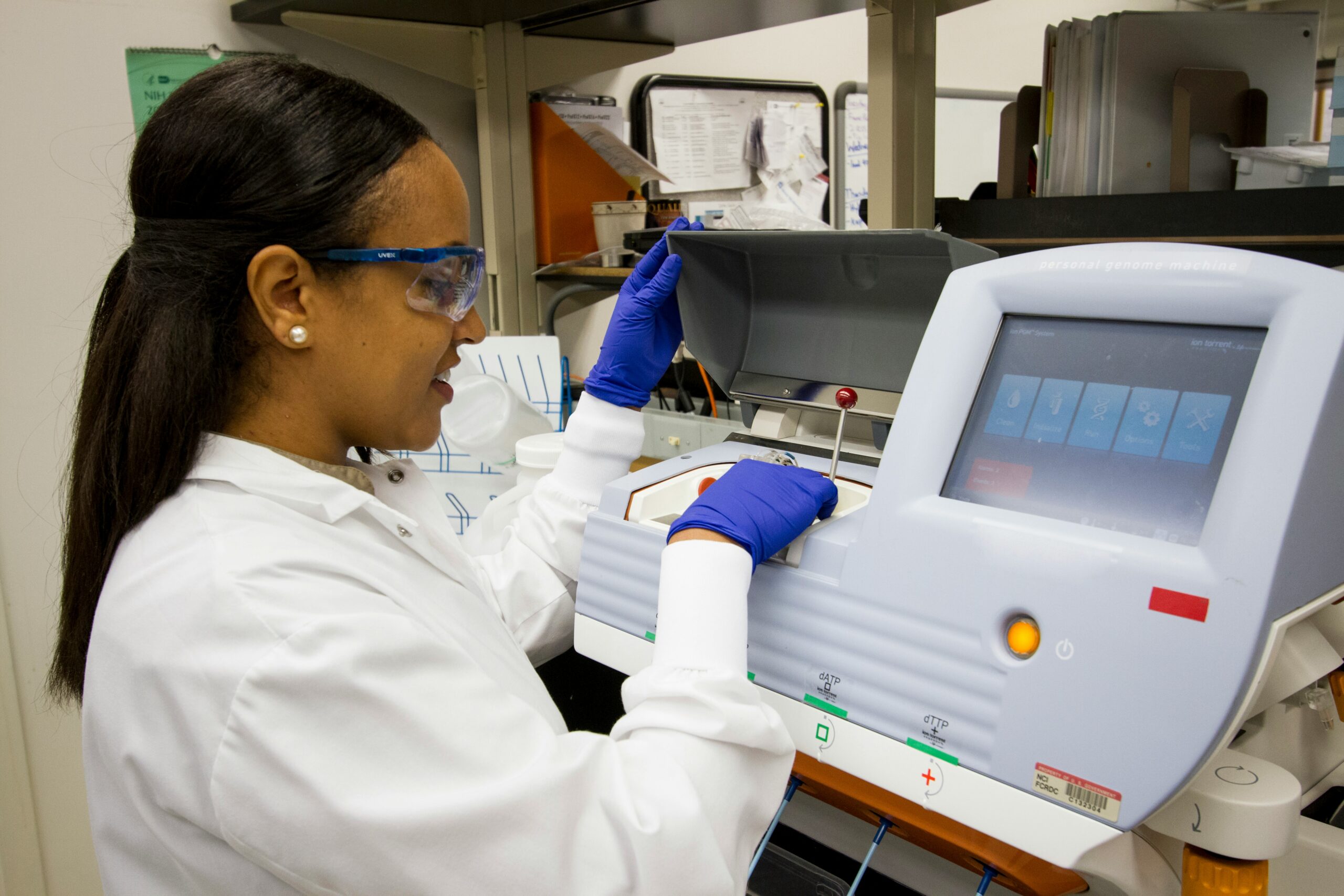
Introduction
Thinking about applying to medical school can be very intimidating, especially as an African American student. The feeling can be very overwhelming to the point where you might not know where to start. That is where this quick guide comes in which will briefly break down the overall process. In later articles, we will go more in-depth about each part and give key details to secure your white coat!
Before College
As a high schooler, if you are sure that you want to pursue medicine, looking into a dual degree program such as a B.S./MD program can give you a head start on this process. This program will expedite your journey into medicine and you may be able to knock out both your B.S. and your M.D. within six years.
This program is not offered at every university so make sure you pay attention to that when looking to pursue this.
In The Thick Of It : Courses
When you first enter college, you can major in anything that you would like from English to Art to Biology! Choose whatever major suits you best but keep in mind that to enter medical school you have to take specific pre-requisite classes to ensure that you are ready for medical school.
When majoring in majors that are science-based like Biology or Chemistry you are more likely to take these classes already, although it is not guaranteed that you will hit all of them. Preferably you would take these classes before taking your MCAT or while you are studying for it. The classes that are required are as follows:
- One year of Biology with lab
- One year of General Chemistry with lab
- One year of Organic Chemistry with lab
- One year of Biochemistry
- One year of Physics with lab
- One year of English
- One year of Math/Stats
Another class that may be required at some schools is Psychology or Sociology. Even if this is not required by the medical school you want to attend, taking one of these classes might not be a bad idea because there is a whole section on the MCAT dedicated to these topics. Other classes that we think would be helpful are:
- Human Physiology (helped so much- take before the MCAT)
- Anatomy and Physiology
- Cell Biology
- Genetics
- Microbiology
When taking these classes you want to try your personal best and get the highest grades that you can! However, most medical schools’ unspoken rule is to have at least a 3.0 GPA but the average applicant has around a 3.7 which makes them competitive.
If you want specific stats you can check out the AAMC website and this specific table (download (aamc.org)) for a better breakdown. Overall make sure you check the medical schools that you would like to apply to, to get a specific course list to ensure you are taking everything that you need to take.

In The Thick Of It: Extracurriculars (Activities & Work Section)
Doing meaningful extracurriculars may seem like another daunting task on top of every other responsibility you have as a pre-medical student but it is just as important as acing your courses or doing well on the MCAT.
Participating in different activities can widen your perspective and also strengthen your passion for medicine. All of these activities do not have to be new as well, you can show who you are by putting down activities and hobbies that interest you such as volunteering at a foodbank or painting.
Although they do not have to be new activities, you want to make sure they are things that you are still actively doing while writing your essays or until you are accepted into medical school. So if you have been painting for five years and you feel like it shows who you are, put that on your application!
As you enter college it is important to also start new activities early so you find the ones that you are passionate about and stick with them your whole college career. As medical schools view your application they will see the longevity of the activities and it will display that you are dedicated and passionate about these things and not just trying to check a box to get into school.
These activities do not have to be pursued equally as well. Understandably, you may want to spend time on some activities more than others and that is perfectly okay because it is all about what you care about the most.
The activities that you end up wanting to put on your application will be one of the only things that show who you are as a person besides your personal statement so make sure you give it the care it deserves because medical schools want to know who you are!
In a later article, we will break down the most common types of activities put in this section and go in-depth on how to write them the best way you can.
In The Thick Of It: MCAT
Most pre-medical students have heard about the MCAT but if you have not that is okay! We are here to give you a quick rundown of what it is and what it consists of.
There will also be a whole MCAT mini-series on different parts of the MCAT, from how to set up a study plan for it, what each section consists of, and how you can increase your chances of getting the best score possible.
Sections
The MCAT is a standardized test that all medical students have to take to matriculate into medical school. The test consists of four major sections that contain 59 questions each. The different sections are Chemical and Physical foundations, CARS (Critical Analysis and Reasoning), Biological and Biochemical Foundations, and Psychological, Social, and Biological Foundations.
The test is roughly seven and half hours long with the science sections (Chem/Phys, Bio/Biochem, and Psych/Soc) being 95 minutes each and the CARS section clocking in at 90 minutes. Each section is worth 25%, with the highest score being a 528 total and a 132 in each section.
Timing
We know this can be a lot to take in at first but with proper preparation and organization, it can be done! Generally, the test is taken the year before you want to matriculate into medical school. So for example, if you want to matriculate into medical school right after your senior year of college you would ideally take the test sometime in your junior year so you can apply during junior year and go straight through.
This is what most “traditional students” do but it can be done in many different ways. Some people want to take time off after college to rest and get ready for medical school and that is great and most often needed. As long as you take the test and apply the year before you want to matriculate you will be fine.
With that being said the test is only offered during certain times throughout the year, so you have to make sure that the time you want to take the test falls within that window. The MCAT schedule can be found here (U.S. MCAT® Calendar, Scheduling Deadlines, and Score Release Dates | Students & Residents (aamc.org)) for specifics.
Scheduling
I know it can be tempting to try to start studying as soon as you get to college but this will not be as helpful as you think. The average time students take to study is between 3-6 months give or take. This is optimal because it allows you to retain the information and skills you need for the test without getting burnt out.
Once you start pushing a year of studying you may start to feel less motivated and tired of studying. You can however purchase MCAT books once you enter college and line that information up with what you learned in school so by the time you start studying you will know what was covered and what was not. This is truly optional and not something that most students do but it would not hurt either!
With all that being said, while you are in school and waiting to start studying you can start researching everything there is to know about the test in the meantime. This blog obviously has tons of information and resources for you but we also recommend that you watch YouTube videos, listen to podcasts, and even just search the web for any information that you can gather about the test as well as the application.
We also have a post with all the resources that we used during this process.
Time To Wrap It Up: Applications & Interviews
Once you are done taking the MCAT, you will be ready to apply! The application process has two phases: the primary application and the secondary application.
The primary application is the application that will be sent out to all the medical schools that you applied to. It has many different parts such as the work and activities section mentioned earlier, your personal statement, your grades, etc…
The primary application has many moving parts so like anything in this process, it is important to stay organized and start early so that you can pull all the information needed together faster when it’s time to apply.
Once you turn in your primary application to AMCAS or AACOMAS and are completely verified, you will most likely start receiving secondary applications. The secondary applications will be sent from the schools directly and not through AMCAS or AACOMAS like the primary application. It is also important to start these early so they do not pile up.
Lastly, after you submit everything and the schools have reviewed your application and feel like it is a good fit they will offer you an interview. Pre- COVID era the interviews were in person but in the last couple of cycles they have been over Zoom. This is the least stressful part of the whole process and if you have made it that far (which we know you will) then we know you will ace it with flying colors.
You Are Done… Period
After all of that, you will receive your acceptance and just wait to start school! We hope that this guide was helpful. Remember to take it one step at a time and you will get through it.
Every time you think about giving up remember why you are doing it and think about the times when you will be done with the whole process and in medical school. If you need more in-depth information about a specific part of the process check out our other blog post that go more in-depth about these topics.

